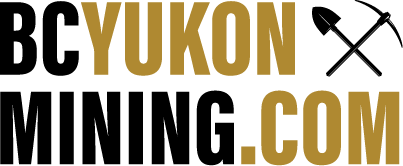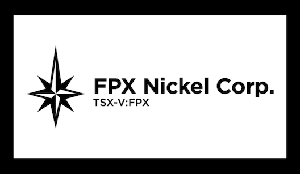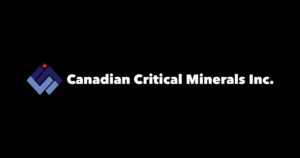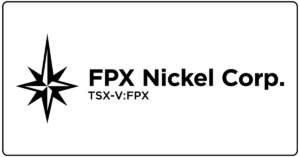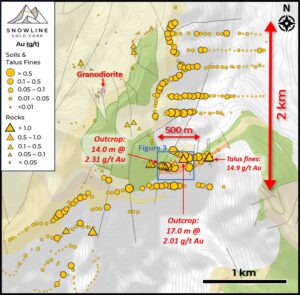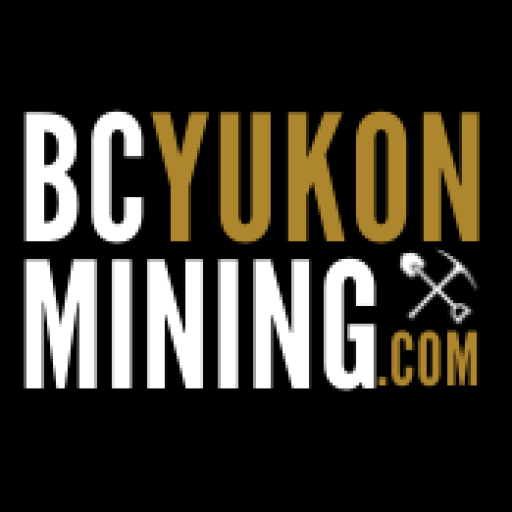VANCOUVER, BC , Dec. 9, 2020 /CNW/ – Sun Metals Corp. (TSXV: SUNM) (“Sun Metals” or “we” or the “Company”) is pleased to announce additional high-grade drill results from the Stardust project that extend the known plunge length of the 421 zone to 425 metres. The 100% owned Stardust project is located in northcentral British Columbia , 250 kilometers northwest of the city of Prince George .
Drill hole DDH20-SD-464D returned 12.14% Copper Equivalent (CuEq) 1 over 4.45 metres (m) 2 . This drill hole is a 45m step out from hole DDH20-SD-456M and demonstrates that high-grade mineralization continues up plunge to the south from prior drilling, opening up room for ongoing resource growth. This impressive intersection now extends the plunge length of the 421 zone and indicates that the system is open for further expansion. The drill hole returned:
- 12.14% CuEq over 4.45m grading 5.58% Copper (Cu), 5.99 grams per tonne (g/t) Gold (Au) and 190.5 g/t Silver (Ag), from 614.25m .
Director Dr. Mark O’Dea commented “The Stardust deposit, and in particular the 421 zone discovered by Sun Metals in 2018, is one of the highest grade copper-gold systems discovered in Canada over the past decade. The team has had tremendous success in building continuity and demonstrating consistency of tenor from surface down to 900 metres depth. And importantly, the Stardust mineral system remains open for expansion. With the recent merger announcement between Sun Metals and Serengeti Resources, we look forward to showcasing the compelling exploration and development synergies that we believe exist between the Stardust and adjacent Kwanika deposits”.
Table 1: Significant Drill Results From This News Release
| Drill Hole Name | From (m) | To (m) | Length (m)² | Copper (%) | Gold (g/t) | Silver (g/t) | Zinc (%) | Cu Eq (%)¹ |
| DDH20-SD-464D | 499.00 | 506.30 | 7.30 | 1.18 | 1.07 | 14.4 | 0.02 | 2.16 |
| DDH20-SD-464D | 614.25 | 618.70 | 4.45 | 5.58 | 5.99 | 190.5 | 0.12 | 12.14 |
| DDH20-SD-467 | 775.85 | 779.20 | 3.35 | 0.78 | 0.85 | 20.3 | 0.03 | 1.64 |
| DDH20-SD-468 | 614.00 | 635.00 | 21.00 | 0.45 | 0.28 | 4.9 | 0.01 | 0.73 |
| DDH20-SD-468 | 657.10 | 658.85 | 1.75 | 1.28 | 0.60 | 13.5 | 0.01 | 1.88 |
In just over 2 years, the team at Sun Metals has firmly established the Stardust system as having continuity and predictability, and endowed with copper-gold grades that are considerably higher than those typically found in BC porphyry deposits. For illustrative purposes, the grades and intercept lengths of 10 holes from the Stardust system are shown below.
Table 2: Previously Reported High-Grade Mineralization Intercepted in the Stardust Mineralized System 3
| Drill Hole Name | From (m) | To (m) | Length (m) (2) | Copper (%) | Gold (g/t) | Silver (g/t) | Zinc (%) | Cu Eq (%) (1) |
| LD2002-09 | 401.00 | 432.30 | 31.30 | 1.34 | 11.84 | 69.41 | 0.03 | 11.24 |
| DDH18-SD-421 | 517.00 | 617.00 | 100.00 | 2.51 | 3.03 | 52.5 | 0.41 | 5.53 |
| DDH19-SD-428D | 493.45 | 635.80 | 142.35 | 1.22 | 1.28 | 21.8 | 0.41 | 2.58 |
| DDH19-SD-429M | 564.00 | 654.05 | 90.05 | 1.08 | 1.40 | 21.6 | 0.22 | 2.46 |
| DDH19-SD-430D | 546.00 | 653.00 | 107.00 | 1.64 | 1.77 | 28.6 | 0.03 | 3.31 |
| DDH19-SD-436D | 502.60 | 548.15 | 45.55 | 1.44 | 1.18 | 27.0 | 0.04 | 2.64 |
| DDH19-SD-436D | 598.40 | 623.25 | 24.85 | 3.13 | 4.85 | 93.5 | 0.28 | 7.92 |
| DDH19-SD-437M | 537.60 | 624.00 | 86.40 | 1.65 | 1.56 | 28.8 | 0.28 | 3.25 |
| DDH19-SD-441M | 609.25 | 650.80 | 41.55 | 2.33 | 2.73 | 44.3 | 0.07 | 4.91 |
| DDH20-SD-457M | 505.70 | 549.70 | 44.00 | 1.57 | 1.08 | 28.2 | 0.01 | 2.69 |
| DDH20-SD-460D | 588.00 | 628.40 | 40.40 | 1.74 | 1.41 | 26.6 | 0.01 | 3.10 |
- Figure 1 – Plan View: http://www.sunmetals.ca/_resources/images/NRDec9Fig1.pdf
- Figure 2 – Long Section : http://www.sunmetals.ca/_resources/images/NRDec9Fig2.pdf
- Figure 3 – Cross Section: http://www.sunmetals.ca/_resources/images/NRDec9Fig3.pdf
- Drill Results Table: http://www.sunmetals.ca/_resources/images/NRDec9MasterDrillResults.pdf
Other Drill holes
DDH20-SD-465 tested a fold hinge target within prospective stratigraphy parallel to and east of the 421 zone. This hole identified a major E-W structure and added to our understanding of the stratigraphy. It also intersected a complex of dykes that correlate with East Zone mineralization (See Figure 1). Trace amounts of copper-gold mineralization were encountered in the drill hole.
DDH20-SD-467 tested a lower extension of the Canyon Creek zone and 421 zone. The drilling intersected strong alteration coupled with anomalous geochemistry associated with the projected extension of the Canyon Creek zone. Deeper in the same hole, a 3.35m interval was intersected from a depth of 775.85m with 1.64% CuEq associated with the 421 zone. This intersection is approximately 150m down dip from the intersection in drillhole DDH20-SD-464D.
DDH20-SD-468 tested for a lower extension of the Canyon Creek zone and 421 zone, testing the same horizons as drill hole DDH20-SD-467. It intersected a long interval of lower grade mineralization within the historic Canyon Creek zone, over a 46.85 m core length from a depth of 612.00m averaging 0.47% CuEq associated with chalcopyrite and molybdenite veining in intrusive porphyry and clastic sediments. The top 21.00m of that interval intersected 0.73% CuEq in the Canyon Creek zone and also a 1.75m interval from 633.0m grading 1.88% CuEq. At 759.75m downhole a massive sulphide vein with 10.46% CuEq over 0.35m was intersected within the 421 zone. The massive sulphide vein is approximately 225m away from DDH20-SD-464D and demonstrates good continuity of the system at depth.
“Sun Metals continues to intersect high-grade copper and gold mineralization as we test further south within the 421 zone” commented Ian Neill , Vice President Exploration. “The intersection at depth in hole DDH20-SD-468, over 225m away from the high grade interval reported in hole DDH20-SD-464D indicates this entire area has potential to host significant mineralization. The continued high grades are the key. This area lies stratigraphically below the historic Canyon Creek zone and is virtually untested by historic drilling”.
Quality Assurance / Quality Control
Drilling completed on the project in 2020 was supervised by on–site Sun Metals personnel who collected and tracked samples and implemented a full QA/QC program using blanks, standards and duplicates to monitor analytical accuracy and precision. The samples were sealed on site and shipped to Bureau Veritas (BV) in Vancouver BC for analysis. BV’s quality control system complies with global certifications for Quality ISO9001:2008. Core samples were analyzed using a combination of BV’s AQ270 process for low level concentrations (ICP–ES/MS aqua regia) and the MA270 process for higher level concentrations (ICPES/MS 4 acid digestion). Gold assaying was completed with FA330, a 30–gram fire assay with ICP–ES finish. Base metal overlimits were finalized with titration, with gold overlimits completed with a gravimetric finish. A silica wash was used between high–grade samples to ensure no sample carry over.
A total of 11,988m of drilling was completed in 17 drill holes with 3,147 samples shipped to the lab. Lab turnaround time has been significantly negatively impacted by the COVID-19 pandemic. Include the four holes reported here, results from 14 drill holes have been received at the time of this release. The remaining results will be reported when they are received from the lab.
Prices used to calculate the CuEq values 1 in this release have been updated from previous reporting on the Stardust project to reflect the change in commodity prices.
Technical aspects of this news release have been reviewed, verified and approved by Ian Neill P.Geo ., Vice President Exploration of Sun Metals, who is a qualified person as defined by National Instrument 43-101 – Standards of Disclosure for Minerals Projects . For further information of the Stardust Project please see technical report titled “Stardust Project NI 43-101 Technical Report” prepared by Ronald G. Simpson , P.Geo., GeoSim Services Inc., with an effective date of January 8, 2018 , as filed under the Company’s profile on SEDAR at www.sedar.com .
An updated interactive corporate presentation is available on Sun Metals’ website at https://www.sunmetals.ca/investors/presentation/ .
On Behalf of the Board of Directors of
SUN METALS CORP. Steve Robertson
Chief Executive Officer
